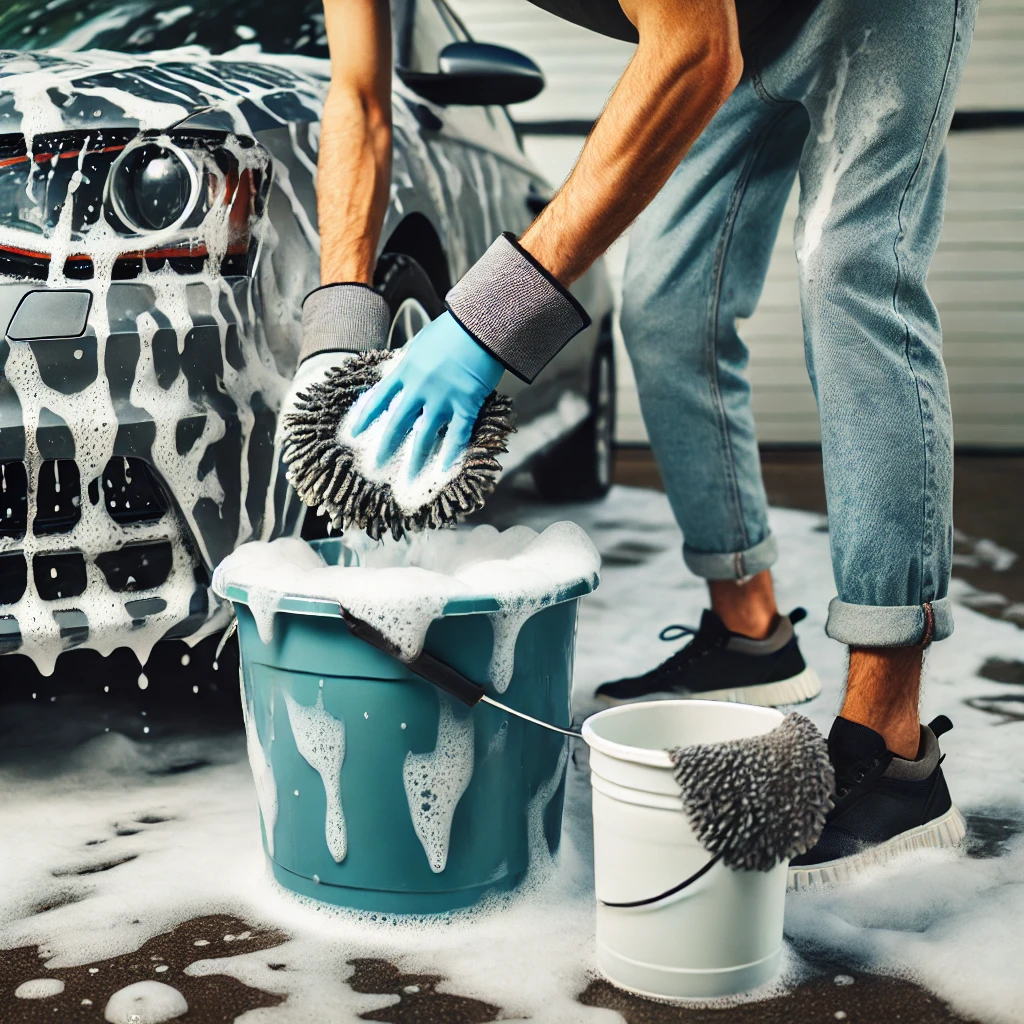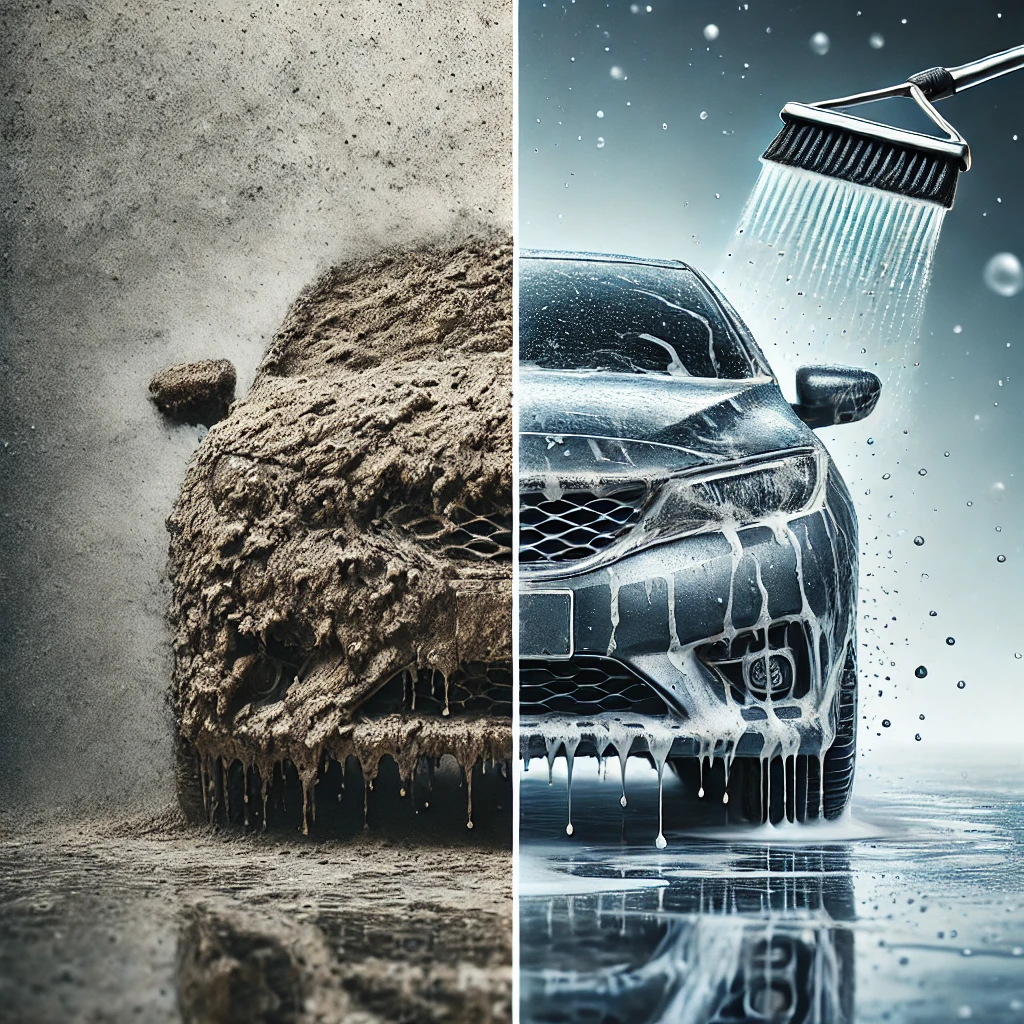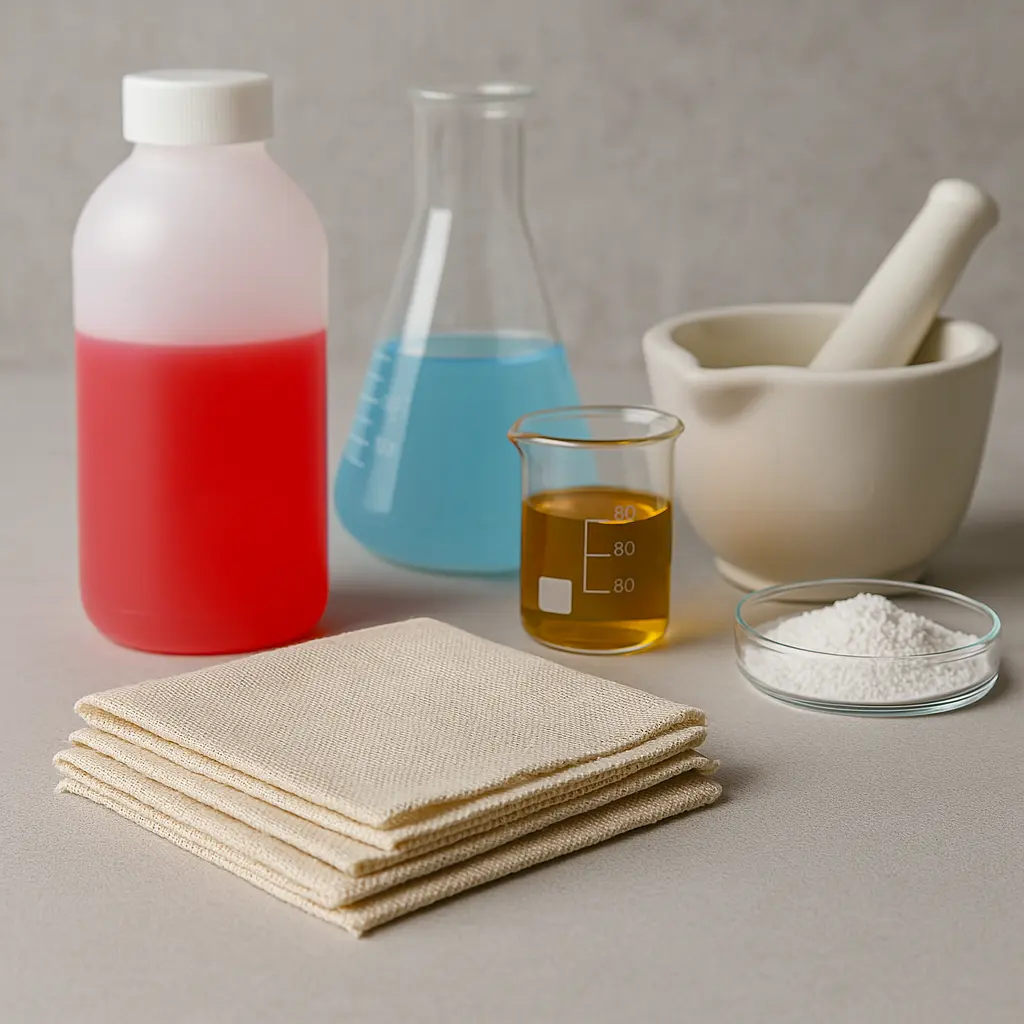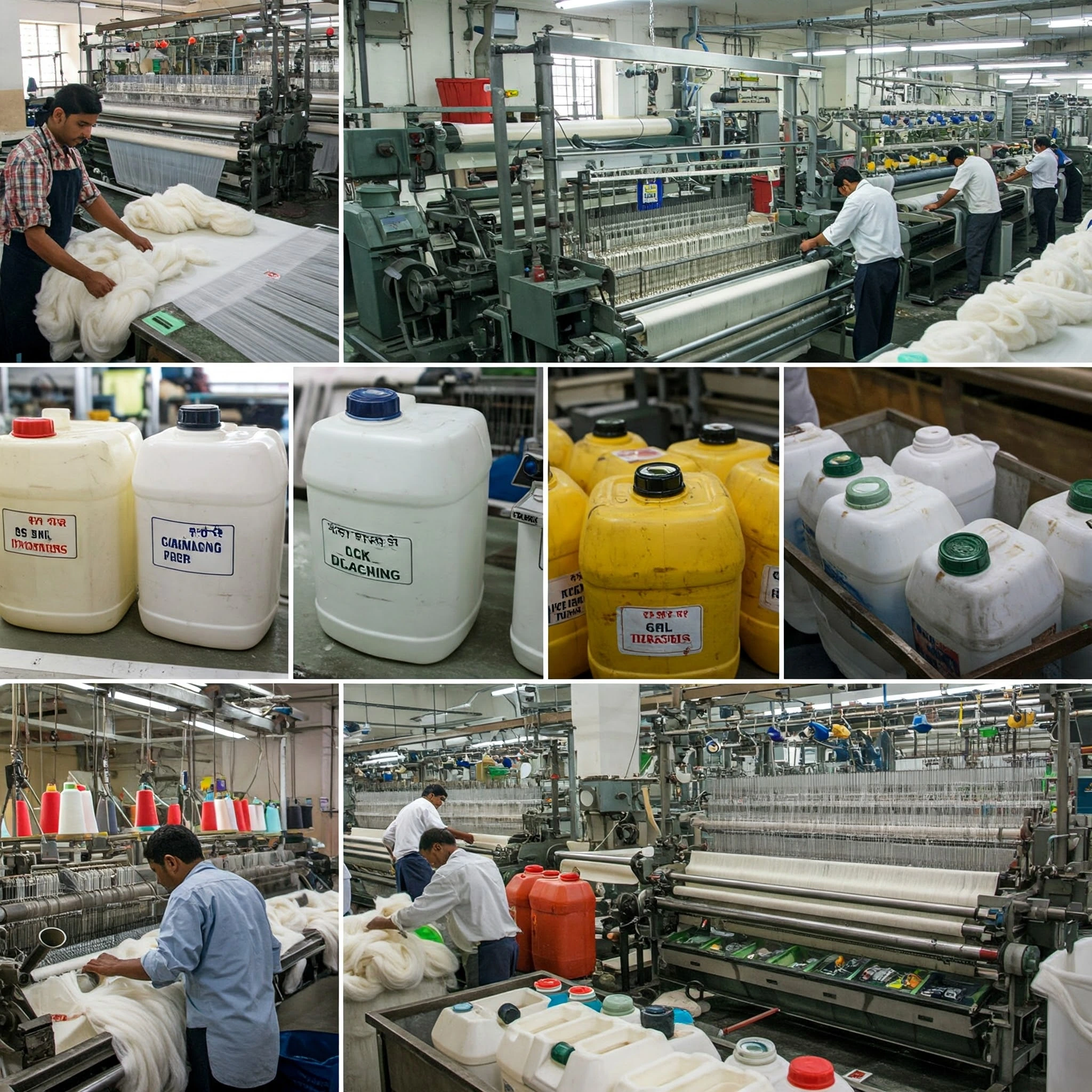Table of Contents

Car Shampoo: The Definitive Handbook on Car Shampoo: All the Knowledge You Require
Let’s cut to the chase. You want a clean car, right? Forget the dish soap, that’s a rookie mistake. Real car care starts with the right car shampoo. View it as the essential element for a shimmering finish. We’re diving deep. No fluff, just facts. Why does your car need specialized soap? Because your car’s paint isn’t your kitchen sink. It’s a delicate surface. We will explore the various types, the techniques employed, and the subtle nuances that contribute significantly to the overall outcome. Ready to ditch the dirt and get that showroom shine? Let’s get started. This isn’t just about cleaning, it’s about protecting your investment. And, frankly, making your ride look good.
In this guide, we’ll cover:
✅ Why proper car washing matters
✅ The difference between car shampoo and dish soap
✅ Types of car shampoo and which one is best for your vehicle
✅ Step-by-step car washing techniques
Why Proper Car Washing Matters: Protecting Your Vehicle’s Shine
✔ Prevents scratches – Dirt buildup can cause micro-abrasions
✔ Protects the clear coat – Shields your car from oxidation and corrosion
✔ Boosts resale value – A well-maintained car retains its worth
✔ Enhances aesthetics – A shiny car looks better and reflects good maintenance
🚫 Avoid automatic drive-through washes! They often use harsh bristles that cause swirl marks. Instead, invest in a high-quality car shampoo and proper hand-washing techniques..
Car Shampoo vs. Dish Soap: Understanding the Key Differences
Dish soap and car shampoo—they both clean, right? Wrong! Using dish soap on your car is like washing your face with laundry detergent—it strips away protective wax and damages the paint.
| Feature | Car Shampoo | Dish Soap |
| pH Balance | Neutral | Alkaline |
| Wax Safe | Yes | No |
| Lubrication | High | Low |
| Shine Enhancers | Often | Never |
| Paint Protection | Yes | No |
🔹 Pro Tip: Always use a pH-balanced car shampoo to maintain your car’s paint and finish.
Selecting the Optimal Car Shampoo to Meet Your Vehicle’s Requirements
Key Factors to Consider When Choosing a Car Shampoo:
- pH Balance
- ✔ Look for pH-neutral car shampoo (~7) to protect your car’s clear coat.
- Wax-Safe Formula
- ✔ If you apply wax or ceramic coating, ensure the shampoo is wax-safe.
- High-Foaming Action
- ✔ A good foaming car shampoo reduces friction, preventing swirl marks.
- Wash & Wax Combo Shampoos
- ✔ These offer quick protection, but won’t replace a separate waxing routine.
- Eco-Friendly Car Shampoo
- ✔ Biodegradable car shampoos are safer for the environment.
Different Types of Car Shampoos:
1. Standard Car Shampoo – Best for regular maintenance washes.
2. Wash & Wax Shampoo – Cleans & adds a thin wax layer for extra shine.
3. Ceramic-Infused Shampoo – Ideal for ceramic-coated cars.
4. High-Foaming Shampoo – Perfect for foam cannon users and heavily soiled vehicles.
Why pH-balanced formulas matter for car paint protection:
Understanding pH
- The pH scale extends from 0 to 14, where a value of 7 indicates neutrality.
- Anything below 7 is acidic, and anything above 7 is alkaline.
- Car paint and its protective layers (like wax or ceramic coatings) thrive in a neutral environment.
Why pH Balance Matters
- Protection of the Clear Coat:
- Your car’s clear coat is a delicate layer that protects the underlying paint.
- Highly acidic or alkaline shampoos can erode this layer, leading to fading, oxidation, and other damage.
- pH-balanced shampoos clean effectively without harming the clear coat.
- Preservation of Wax and Sealants:
- Many car owners apply wax or sealants to their vehicles for added protection and shine.
- Harsh shampoos can strip away these protective layers, reducing their effectiveness.
- pH-neutral shampoos are gentle and won’t interfere with these coatings.
- Prevention of Corrosion:
- Acidic substances can accelerate the corrosion process, especially if your car has any chips or scratches.
- By using a pH-balanced shampoo, you minimize the risk of corrosion.
- Maintaining Shine:
- pH-neutral formulas help preserve the glossy finish of your car’s paint.
- They remove dirt and grime without dulling the surface.
In essence:
- Using a pH-balanced car shampoo is a preventative measure that helps maintain the long-term health and appearance of your car’s paint.
- It is a simple step that can save money and keep your car looking showroom new.
Therefore, when choosing a car shampoo, always prioritize those with a pH-neutral formula.
Foam-Based vs. Liquid Car Shampoo: Which One is Right for You?
| Feature | Foam-Based Car Shampoo | Liquid Car Shampoo |
| Application | Requires a foam cannon or foamer for optimal use. | Can be used with a wash bucket and sponge/mitt. |
| Foaming Action | Produces thick, rich foam that clings to the vehicle’s surface. | Produces suds in a bucket, but foam is usually less dense. |
| Cleaning Power | Excellent for lifting and encapsulating dirt and grime, especially on heavily soiled vehicles. | Effective for general cleaning, but may require more agitation for stubborn dirt. |
| Lubrication | High lubrication due to thick foam, minimizing the risk of scratches. | Lubrication depends on the formula; some provide good lubrication, others less so. |
| Rinsing | May require more thorough rinsing due to the density of the foam. | Generally easier to rinse off. |
| Usage | Ideal for touchless or pre-wash applications, as well as regular washing. | Suitable for traditional bucket washing. |
| Convenience | Requires additional equipment (foam cannon), but can be faster for certain tasks. | Simple and straightforward; requires minimal equipment. |
| Concentration | Often highly concentrated, requiring dilution in a foam cannon. | Diluted in a bucket with water. |
| Cost | May be more expensive due to specialized formulas and equipment requirements. | Typically more affordable. |
| Best Use Case | Great for heavy dirt, touchless washes, or if you want high lubrication. | Good for regular washes, budget-friendly, and simple applications. |
Which One Is Right for You?
- Foam-Based Shampoo is ideal for those who want high lubrication, are dealing with heavily soiled vehicles, or prefer a touchless or pre-wash method. However, it requires additional equipment like a foam cannon, and may cost a bit more.
- Liquid Shampoo is perfect for a straightforward, budget-friendly wash with a wash bucket and sponge/mitt. It’s great for regular maintenance washes but might need more effort to tackle tough dirt.
Key Ingredients in a Quality Car Shampoo:
- Surfactants:
- These are the workhorses. They lift dirt and grime from the surface.
- Look for gentle, biodegradable surfactants. You want cleaning power without harshness.
- Lubricants:
- These prevent scratches during washing.
- They create a slippery surface, allowing dirt to glide away.
- A good shampoo will have plenty of these.
- Chelating Agents:
- These combat hard water minerals.
- They serve to obstruct the development of water spots and the buildup of mineral deposits.
- If you live in an area with hard water, these are essential.
- Foaming Agents:
- While foam isn’t everything, it does help.
- Thick foam lifts dirt and keeps it suspended.
- This prevents it from resettling on your car.
- pH Balancers:
- As we discussed, a pH-neutral formula is vital.
- This protects your car’s paint and wax.
- Wetting Agents:
- These help the shampoo spread evenly across the surface.
- This ensures thorough cleaning.
- Rust Inhibitors:
- These are especially important if your car has any chips or scratches.
- They help prevent rust from forming.
Essentially, a quality car shampoo is a carefully balanced blend. It cleans, lubricates, and protects. Don’t just grab the cheapest bottle. Read the label. Your car’s finish will thank you.
Step-by-Step Guide: How to Wash Your Car Like a Professional
| Step | Action |
| Gather Your Supplies | – Car shampoo – Two buckets (one for wash, one for rinse) – Wash mitt (microfiber is best) – Soft microfiber drying towels – Garden hose with spray nozzle – Wheel cleaner (optional) – Tire brush (optional) |
| Pre-Rinse | – Blast your car with water to remove loose dirt and debris. – Pay extra attention to the wheel wells and undercarriage. |
| Wheel and Tire Cleaning (Optional) | – Spray wheel cleaner on your wheels and tires. – Use a tire brush to scrub away brake dust and grime. – Rinse thoroughly. |
| The Two-Bucket Method | – Fill one bucket with car shampoo and water (follow the product’s instructions). – Fill the second bucket with clean water. – This method prevents redepositing dirt onto your car. |
| Washing | – Dip your wash mitt into the shampoo bucket. – Wash your car in sections, starting from the top and working your way down. – Use straight, overlapping strokes. – Rinse your mitt in the clean water bucket after each section to keep dirt away from the paint. |
| Rinsing | – Rinse your car thoroughly with clean water. – Make sure all soap is gone. |
| Drying | – Use soft microfiber towels to dry your car. – Pat the surface dry rather than wiping to minimize scratches. – Dry from the top down. – Consider using a leaf blower to dry hard-to-reach areas. |
| Final Touches | – Check for any missed spots. – Clean your windows. – Consider applying a quick detailer for extra shine. |
The Two-Bucket Method: A Foolproof Way to Avoid Scratches
The Two-Bucket Method is a game-changer when it comes to safely washing your car. Here’s why it’s such an essential part of the process:
The Problem: Dirt and Scratches
When washing your car, you’re inevitably dealing with dirt, grime, and other contaminants. However, if you only use one bucket, all that dirt ends up in your wash mitt. Every time you dip your mitt back into the soapy water, you’re reloading it with dirt, which can get rubbed back onto your car’s paint. This can cause scratches and swirl marks, which are frustrating and damaging to your car’s finish over time.

The Solution: The Two-Bucket Method
This simple, yet highly effective method minimizes the risk of contamination and paint damage.
How It Works
Wash Bucket:
This bucket contains your car shampoo mixed with water.
It’s where you dip your clean wash mitt to load it with suds.
Rinse Bucket:
This bucket holds plain, clean water.
After you wash a section of your car, you rinse the dirty mitt in this bucket to remove any dirt before dipping it back into the wash bucket.
Grit Guards:
A grit guard is a simple, yet invaluable tool that sits at the bottom of each bucket. It helps trap dirt at the bottom, keeping the rinse water cleaner and further reducing the risk of scratches.
How It Minimizes Scratches:
- When you rinse your mitt in the clean water bucket, you’re removing all the dirt from it before returning it to the soapy water.
- This ensures you always use a clean mitt when washing each section of your car.
- By constantly keeping dirt away from your mitt, the method significantly reduces the chances of transferring abrasive particles onto your car’s delicate paint.
Why It’s Foolproof:
- Simple & Effective: It’s easy to understand and implement—just two buckets and a wash mitt.
- Minimizes Scratches & Swirl Marks: Keeps dirt away from your car’s paint, ensuring a safer washing process.
- Protects Your Car’s Finish: Using a clean mitt helps preserve your car’s paint and keeps it looking shiny and new.
In conclusion, the Two-Bucket Method might seem like a small step, but it’s a big win when it comes to protecting your car’s paint and reducing the risk of damage. It’s worth every extra minute for the long-term care of your car!
Waterless Car Wash Solutions: Are They Better Than Traditional Car Shampoo?
| Feature | Waterless Wash | Traditional Shampoo |
| Cleaning Power | Light dirt, fingerprints | Heavy dirt, grime, salt |
| Convenience | High, quick touch-ups | Lower, requires hose and buckets |
| Risk of Scratches | Higher if used on heavy dirt | Lower with proper technique |
| Water Usage | Minimal | High |
| Film Residue | Possible | Minimal |
| Best For | Light maintenance, spot cleaning | Deep cleaning, heavy soiling |
Key Takeaways:
- Waterless Wash: Great for spot cleaning and light maintenance. It’s convenient and saves water but isn’t suited for heavy dirt or mud. The risk of scratches increases when used on heavily soiled areas, and it may leave a film residue that attracts more dirt over time.
- Traditional Shampoo: Provides thorough cleaning for heavy dirt and grime, and is less risky for your car’s finish when used correctly. It’s more involved and requires a hose and buckets but is more effective in the long run, especially for deep cleaning.
Waterless washes aren’t necessarily “better” than traditional car shampoo. They are simply a useful tool for light cleaning or touch-ups. For a proper, deep clean, traditional car shampoo is still the go-to. Use waterless washes when you need a quick fix, but for a thorough wash, grab the shampoo, water, and bucket.

Best Car Shampoo for Different Paint Types: A Buyer’s Guide
For Standard Clear Coat:
- Look for a pH-neutral shampoo. This is your everyday workhorse. It cleans without stripping wax.
- A good foaming action is a plus. It lifts dirt away.
- Avoid harsh detergents.
For Matte Paint:
- Matte paint is delicate. It shows everything.
- Use a shampoo specifically for matte finishes. These are often detergent-free.
- Never use wax or gloss enhancers. They’ll ruin the matte look.
- Gentle cleaning is key.
For Ceramic Coatings:
- Ceramic coatings are hydrophobic. They repel water.
- Use a shampoo that maintains this property.
- Avoid shampoos with wax or sealants. They can interfere with the coating.
- A dedicated ceramic wash is your best bet.
For Single-Stage Paint:
- Single-stage paint lacks a clear coat.
- It’s more susceptible to oxidation.
- Use a mild shampoo.
- Consider a shampoo with added protection.
- Gentle washing is crucial.
Here’s a quick chart:
| Paint Type | Recommended Shampoo | Avoid |
| Standard Clear Coat | pH-neutral, foaming | Harsh detergents |
| Matte Paint | Matte-specific, detergent-free | Wax, gloss enhancers |
| Ceramic Coating | Ceramic-specific, no wax or sealants | Wax, sealants |
| Single-Stage Paint | Mild, protective | Aggressive cleaners |
Eco-Friendly Car Shampoo: Choosing Sustainable Cleaning Solutions
When choosing an eco-friendly car shampoo, look for these key features to ensure you’re making a responsible choice:
| Feature | What It Means |
| Biodegradable Formulas | Break down naturally and don’t pollute waterways. This is the most important factor. |
| Plant-Based Ingredients | Derived from renewable resources, less harmful than synthetic chemicals. |
| Phosphate-Free | Phosphates can cause algae blooms, which harm aquatic life. Avoid shampoos with them. |
| Concentrated Formulas | Reduces packaging waste and cuts down on shipping, making it more eco-friendly. |
| Recycled Packaging | Bottles made from recycled materials close the loop and reduce plastic waste. |
Why It Matters:
Using eco-friendly car shampoo helps reduce pollution and protect aquatic life. By choosing biodegradable, plant-based products, you’re helping to minimize harmful chemicals running down storm drains and into waterways.
The Benefit:
A clean car and a clean conscience. You don’t have to compromise on performance to make an environmentally friendly choice. Plus, many eco-friendly shampoos clean just as effectively as traditional ones—it’s a win-win.
Every little bit helps when it comes to protecting the planet. Choose eco-friendly car shampoos that align with your values and ensure you’re making a positive impact on the environment!
Wax-Infused Car Shampoo: Does It Really Enhance Gloss and Protection?
Wax-infused car shampoo: does it deliver on its promises? The idea is tempting—clean and wax in one step. But, does it actually work? Let’s dissect this.
These shampoos contain added wax or polymers. They aim to leave a thin layer of protection. This layer can enhance gloss and provide some water repellency. Sounds good, right?
Here’s the catch: the wax layer is very thin. It won’t last as long as a dedicated wax or sealant. Think of it as a quick touch-up, not a long-term solution.
For light maintenance, it’s convenient. It adds a little shine and protection after a wash. But, for serious protection, you’ll still need a separate wax or sealant application.
Also, the quality of the wax varies. Some shampoos use low-grade waxes that don’t last. Others use better formulas that provide decent results.
Here’s a quick rundown:
- Pros:
- Convenient for quick touch-ups.
- Adds some gloss and water repellency.
- Saves time.
- Cons:
- Protection is minimal and short-lived.
- Won’t replace a dedicated wax or sealant.
- Wax quality varies.
So, does it enhance gloss and protection? Yes, but minimally. It’s a trade-off between convenience and performance. If you want a quick boost, go for it. If you want serious protection, stick to dedicated products.
How Often Should You Wash Your Car? Expert Recommendations
How often should you wash your car? That’s the million-dollar question. There’s no one-size-fits-all answer. It depends on several factors. Let’s break it down.
Factors to Consider:
- Driving Conditions:
- If you drive in harsh conditions (salt, snow, mud), wash weekly.
- City driving? Every two weeks is fine.
- Garaged car, minimal use? Once a month might suffice.
- Climate:
- Coastal areas? Salt air is corrosive. Wash more often.
- Dry, dusty areas? Frequent washes prevent buildup.
- Areas with frequent rain? While rain washes some dirt away, it can also leave water spots, so regular washes are still needed.
- Paint Protection:
- Waxed or sealed cars? They repel dirt. You can wash less often.
- Unprotected paint? Wash more frequently.
- Personal Preference:
- Some folks just like a spotless car. That’s fine too.
General Guidelines:
- Weekly: Harsh conditions, salt, snow, heavy dirt.
- Bi-Weekly: Normal driving, city commuting.
- Monthly: Minimal use, garaged cars.
Expert Tips:
- Don’t wait for your car to be filthy. Regular washes are easier.
- Pay attention to the seasons. Winter salt? Wash it off. Summer bugs? Clean them quickly.
- Use the two-bucket method. It’s gentle on your paint.
- If you notice bird droppings, wash them off as soon as possible, they can damage your cars paint.
Basically, use common sense. If your car looks dirty, wash it. If you drive in tough conditions, wash it more often. Don’t let dirt build up.
Common Car Washing Mistakes That Can Damage Your Paint
Here’s what to avoid:
- Using Dish Soap:
- This strips away wax and sealants.
- It’s too harsh for car paint.
- Stick to car shampoo.
- Washing in Direct Sunlight:
- Soap dries too quickly.
- This leaves water spots.
- Wash in the shade.
- Using a Dirty Sponge or Mitt:
- Dirt trapped in the sponge scratches your paint.
- Always use a clean microfiber mitt.
- Rinse it often.
- Skipping the Pre-Rinse:
- Rubbing dry dirt across your paint causes scratches.
- Always rinse off loose dirt first.
- Using a Single Bucket:
- This redeposits dirt onto your car.
- Use the two-bucket method.
- Drying with the Wrong Towel:
- Rough towels scratch the paint.
- Use soft microfiber towels.
- Ignoring the Wheels:
- Brake dust and grime can damage wheel finishes.
- Clean your wheels regularly.
- Using Excessive Pressure:
- Hard scrubbing can cause swirl marks.
- Let the soap do the work.
- Neglecting the Drying Process:
- Water spots happen when water is left to air dry.
- Dry the car promptly.
- Forgetting to Wash from the Top Down:
- This pushes dirty water down the car.
- Start at the roof and work your way down.
Pay attention to the tools, technique, and environment when washing your car. Avoiding these common mistakes will help you maintain your car’s finish, keeping it looking pristine for years to come!
DIY vs. Commercial Car Shampoo: Which One Delivers Better Results?
Here’s a comparison table to help you decide:
| Feature | DIY Car Shampoo (e.g., diluted mild dish soap) | Commercial Car Shampoo (Formulated for cars) |
| Cleaning Effectiveness | May remove some surface dirt, but results can be inconsistent. | Specifically formulated to lift and remove road grime, dirt, and contaminants. |
| Paint Protection | Can strip away wax and sealants, leading to dullness and damage. | pH-balanced, designed to protect paint, wax, and sealants. |
| Lubrication | Minimal, increasing the risk of scratches and swirl marks. | Contains lubricants to minimize friction and prevent scratches. |
| Residue | Can leave a film or residue, attracting more dirt. | Formulated to rinse clean, leaving minimal residue. |
| Specialized Formulas | Limited to basic cleaning; no specialized options for matte, ceramic, etc. | Wide range of formulas for different paint types, coatings, and needs. |
| Cost | Potentially lower upfront cost, but can lead to costly paint repairs. | Higher upfront cost, but protects your investment in your vehicle’s paint. |
| Long-Term Effects | Can accelerate paint damage and fading. | Helps maintain paint integrity and shine over time. |
| Foaming Action | Inconsistent foaming, usually minimal. | Designed to produce optimal foaming for cleaning and lubrication. |
| Ease of Use | Simple, readily available ingredients. | Requires purchasing a product, but provides consistent results. |
| Best Use Case | Very temporary, very light cleaning, if no other options are available. | Regular car washing, protecting the car’s finish, and optimal cleaning. |
Best Tools to Use with Car Shampoo for Maximum Cleaning Power
Here’s a quick summary of the best tools to use with car shampoo for maximum cleaning power:
- Microfiber Wash Mitt – Soft and absorbent, reduces scratches.
- Two-Bucket System – Separates clean and dirty water to prevent reapplying dirt.
- Foam Cannon – Thick foam helps lift dirt and adds lubrication for a scratch-free wash.
- Microfiber Towels – Dry your car quickly without leaving streaks.
- Wheel Brush – Clean wheels without damaging them.
- Soft-Bristle Brush – Reach tight areas like grilles and mirrors.
- Pressure Washer – Quick and effective pre-rinse to remove loose dirt.
- Grit Guard – Traps dirt at the bottom of the bucket to keep wash mitts clean.
- Drying Blower – Dry your car quickly without touching the paint.
- Clay Bar (Optional) – Removes contaminants for a smooth finish.
These tools will help ensure a thorough, scratch-free clean and protect your car’s finish.
Hard Water Spots & Car Shampoo: How to Prevent and Remove Them
Prevention:
- Dry Immediately: Use soft microfiber towels and dry your car from top to bottom to prevent water spots.
- Wash in the Shade: Wash your car in cooler conditions to avoid mineral deposits from forming due to fast evaporation in direct sunlight.
- Use Filtered Water: Install a water softener or filter to reduce mineral content in the water.
- Apply a Wax or Sealant: Create a protective barrier that helps water bead and roll off, reducing the chance of spots.
Removal:
- Vinegar Solution: Mix equal parts water and white vinegar, spray on affected areas, then rinse thoroughly.
- Specialized Water Spot Removers: Use products designed specifically to dissolve and remove hard water spots.
- Clay Bar: Use a clay bar with a lubricant to lift embedded contaminants and water spots.
- Polishing: For severe spots, use a mild polish carefully to remove the top layer of paint.
Tip: Quick drying and protective coatings are key to preventing spots. If they appear, treat them immediately to avoid lasting damage.
Can Car Shampoo Be Used on Other Surfaces? Myths vs. Facts
| Surface | Myth/Fact | Explanation |
| Household Windows | Myth | Car shampoo isn’t formulated for glass and may leave streaks or a film. Use dedicated glass cleaners. |
| Household Tiles/Floors | Myth | Car shampoo lacks the right cleaning agents for tile and floor grime, and may leave a slippery residue. |
| Motorcycle Paint | Fact (with caution) | Can be used, but check the motorcycle’s finish. Matte finishes need specialized shampoo. Avoid harsh shampoos. |
| Bicycle Frames | Fact (with caution) | Safe for painted metal or carbon fiber frames, but avoid delicate components or untreated surfaces. |
| Outdoor Furniture (Plastic/Resin) | Fact | Effective for cleaning plastic or resin furniture. Rinse thoroughly to remove soap. |
| Vinyl Siding | Fact (with caution) | Diluted car shampoo can clean vinyl siding. Test a small area first. Avoid harsh shampoos on old siding. |
| Rubber/Plastic Trim | Fact | Safe for most rubber and plastic trim. Cleans without causing damage. |
| Boat Hulls (Painted) | Fact (with caution) | Can be used on painted boat hulls, but marine-specific shampoos are better for saltwater environments. |
| RV/Camper Exteriors | Fact (with caution) | Yes, but check the RV’s finish. Avoid abrasive shampoos on delicate surfaces. |
| Painted Metal Surfaces (e.g., garage doors) | Fact | Safe for cleaning painted metal surfaces. Be sure to rinse thoroughly. |
Key Takeaways:
- Caution is needed when using car shampoo on non-automotive surfaces, especially on delicate or specialized finishes (like matte paint, RVs, or vinyl siding).
- Rinse thoroughly to avoid soap residue that could attract dirt or damage surfaces.
Top-Rated Car Shampoos on the Market: Reviews & Recommendations
- Meguiar’s Gold Class Car Wash Shampoo & Conditioner
- Review: A classic favorite. pH-balanced and rich in conditioners, this shampoo creates a luxurious foam and leaves a deep gloss.
- Recommendation: Ideal for everyday washing and anyone looking for a rich, glossy finish.
- Chemical Guys Mr. Pink Super Suds Car Wash Shampoo
- Review: Known for its high foaming action and pleasant cherry scent. Gentle, pH-balanced, and effective at lifting dirt.
- Recommendation: Perfect for foam cannon users and those who enjoy a fun washing experience.
- Adam’s Polishes Car Shampoo
- Review: Highly concentrated for great value. Produces thick foam and is safe for all surfaces, including ceramic coatings.
- Recommendation: A top choice for enthusiasts seeking a premium and versatile shampoo.
- Griot’s Garage Brilliant Finish Car Wash
- Review: Excels at removing tough grime while remaining gentle on paint. Leaves a slick finish and is easy to rinse.
- Recommendation: Excellent for heavily soiled vehicles and those wanting a powerful yet safe clean.
- Turtle Wax Hybrid Solutions Ceramic Wash & Wax
- Review: Combines cleaning and ceramic protection in one step. Creates a hydrophobic layer and enhances gloss.
- Recommendation: Great for those looking for quick protection and shine after washing.
- P21S Total Auto Wash
- Review: A powerful cleaner that’s still gentle on paint. Excellent for removing bugs, road grime, and stubborn contaminants.
- Recommendation: Ideal for those needing to lift heavy dirt without harming their car’s finish.
Key Considerations:
- pH Balance: Always choose pH-neutral shampoos to protect your paint.
- Foaming Action: Opt for shampoos that produce thick foam for better lubrication and scratch prevention.
- Concentration: Highly concentrated formulas offer better value and more washes per bottle.
- Paint Type: Ensure the shampoo is compatible with your car’s finish, especially if you have a specialty coating like ceramic.
The “best” car shampoo depends on your specific needs and preferences. Whether you want a rich shine, superior protection, or powerful cleaning, there’s a perfect option for you! Make sure to read reviews and consider your specific washing needs.
Final Thoughts: Choosing the Best Car Shampoo
✅ Always use a pH-balanced, wax-safe car shampoo.
✅ Choose high-foaming formulas to prevent swirl marks.
✅ Use the two-bucket method to reduce dirt transfer.
✅ Wash your car weekly or bi-weekly for the best results.
A clean car is a happy car! Keep it shining with the right shampoo and washing techniques.

